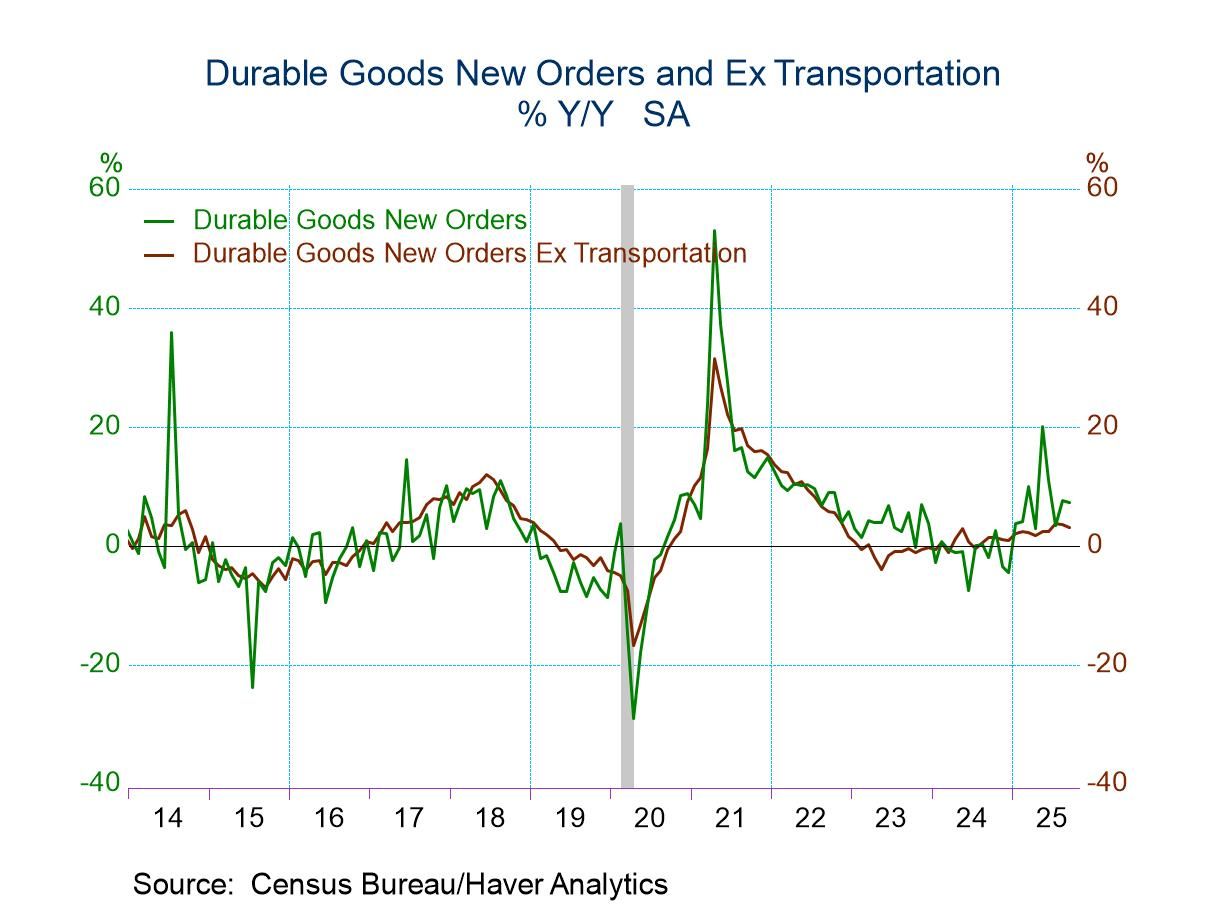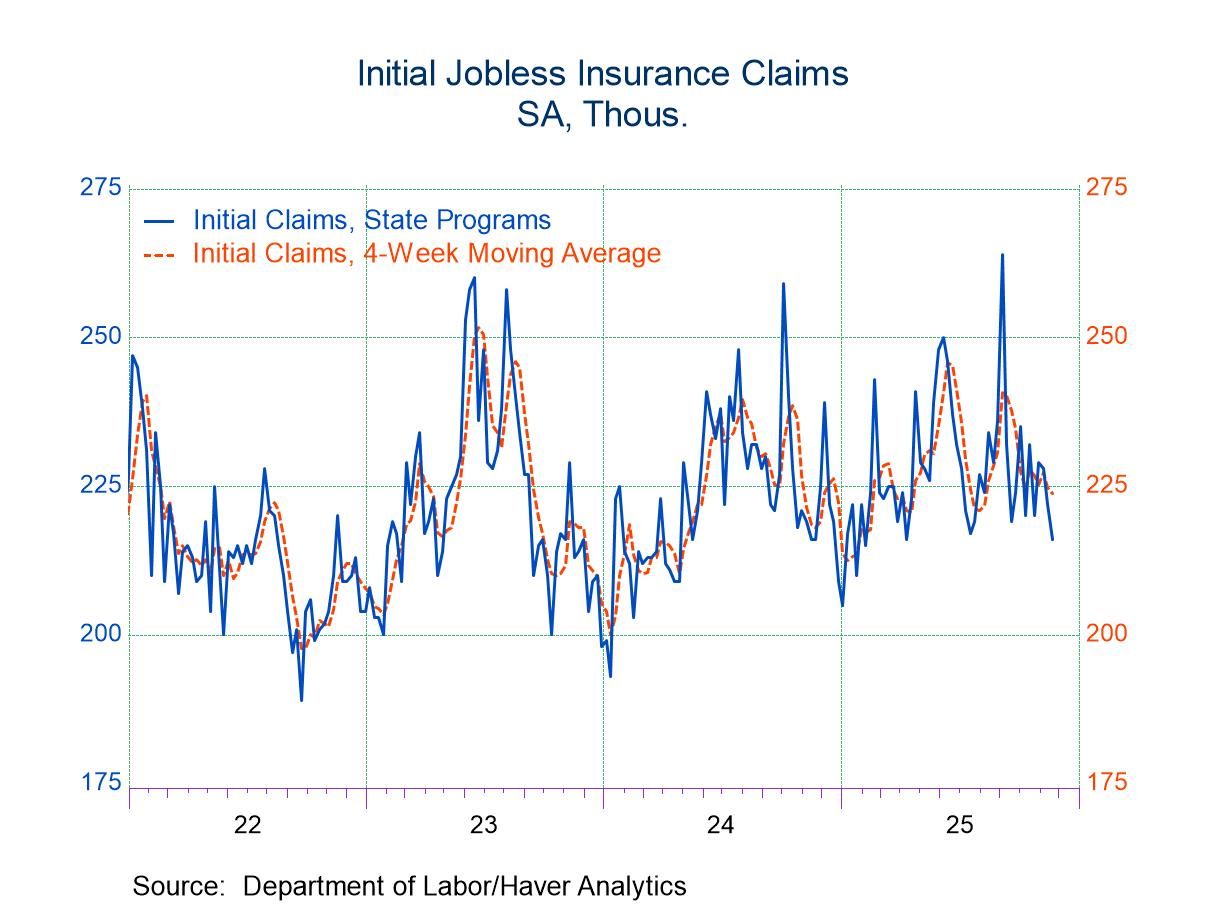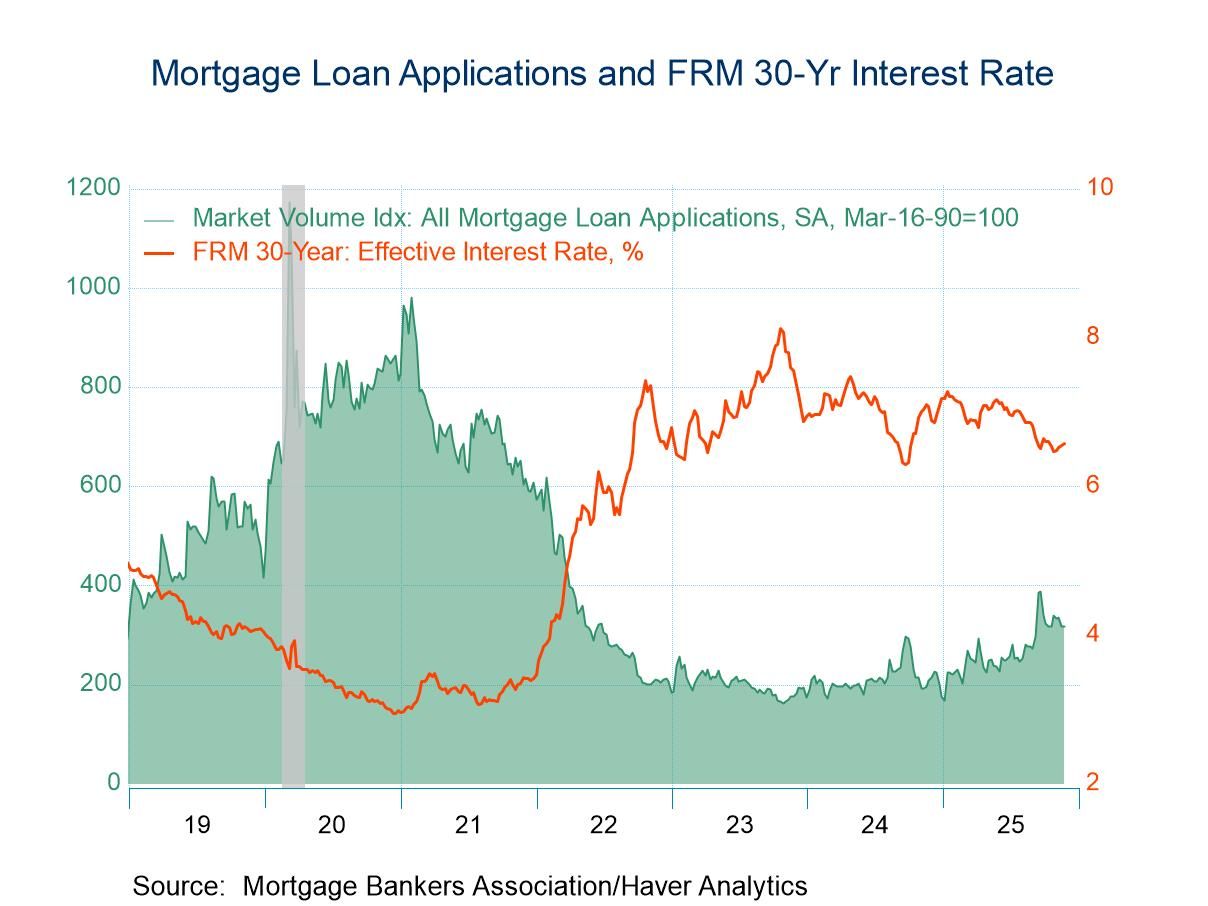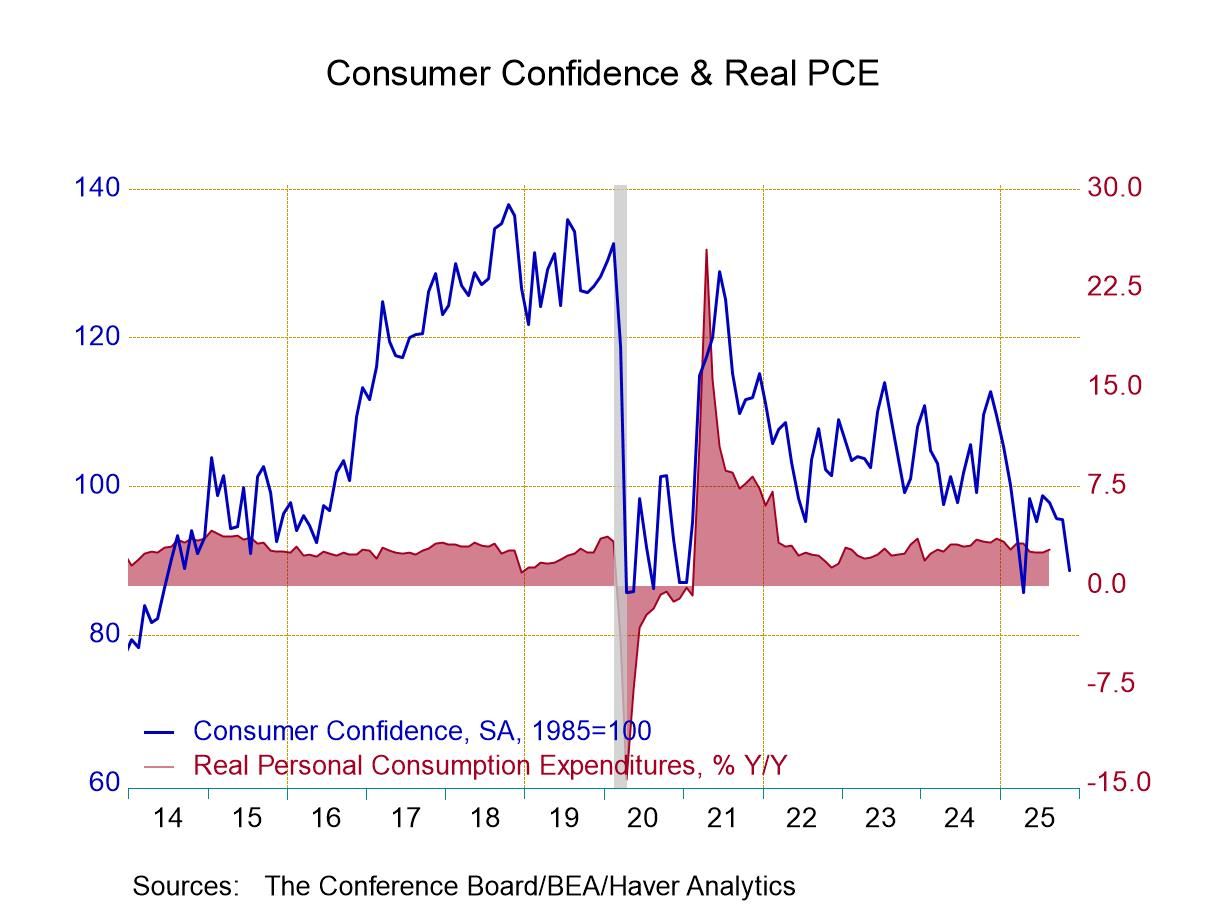 Global| May 29 2025
Global| May 29 2025Charts of the Week: The Yield Awakening
by:Andrew Cates
|in:Economy in Brief
Summary
Financial markets have entered a more unsettled phase, with long-term yields, until very recently, rising notably across the US, Europe, and Japan. While inflation persistence and increased government borrowing have played a role, the moves also reflect broader concerns about global policy credibility and capital market dynamics. In the US, the unusual combination of higher yields and a weaker dollar points to growing risk premia linked to trade uncertainty and questions around institutional leadership (chart 1). At the same time, the withdrawal of central bank balance sheet support has continued to lift real yields across major economies (chart 2). Investors are also paying closer attention to savings and investment imbalances, where fewer surplus economies and persistent US deficits suggest a potentially tighter global savings environment (chart 3). Interestingly, the US stands out for a different reason: early signs of a productivity revival are emerging, possibly tied to AI investment and the broader digital infrastructure boom (chart 4). That contrasts with continued productivity stagnation in most other advanced economies (chart 5), where structural frictions and energy costs remain a drag. Indeed, the US may also be benefiting from a more fundamental edge—significantly cheaper electricity—giving it a further competitive advantage in this new capital- and data-intensive era (chart 6).
The US dollar and US Treasuries This first chart highlights an unusual divergence: while US 10-year Treasury yields have continued to rise through May—reflecting increased term premia and a reassessment of fiscal risks—the broad nominal effective exchange rate for the US dollar has fallen sharply. This disconnect points to growing unease about the institutional and geopolitical underpinnings of US financial leadership. The Trump administration’s aggressive tariff policies, initiated in early April and selectively rolled back in May, have heightened uncertainty over the credibility of US trade strategy. While the Treasury sell-off is partly a function of persistent inflation concerns and elevated issuance, it also reflects a rising risk premium associated with erratic policy signals and capital flow disruptions. Importantly, this repricing hasn’t remained confined to US markets—long-term yields have moved higher across Europe and Japan as well, suggesting that global fixed income investors are increasingly reacting to systemic pressures rather than country-specific fundamentals. The dollar’s underperformance in this context may reflect not just narrowing rate differentials, but a deeper questioning of its safe-haven role.
Chart 1: US Dollar Weakens Despite Rising Yields

Central Bank policy and rising real yields The second chart underscores a key structural force behind the recent rise in real yields: the retreat of central bank support. The inverted bars, showing the decline in central bank assets as a share of GDP, highlight the steady withdrawal of balance sheet stimulus across major economies since 2022. As central banks unwind their holdings, term premia have begun to rebuild, pushing up longer-term US real yields. This shift reflects not just the end of quantitative easing, but a deeper re-pricing of risk in a world where investors can no longer rely on central banks to backstop sovereign bond markets. The rise in real yields could be seen as both a signal of capital scarcity and a challenge for leveraged economies—especially those facing higher debt servicing costs and more volatile funding conditions in the post-QE era.
Chart 2: A shrinking Central Bank put

Global imbalances The third chart further illustrates a potential shift in global financial dynamics: the gradual erosion—or at least plateauing—of global current account surpluses. While IMF data show that emerging and developing economies continue to post modest external surpluses, forecasts suggest the aggregate position of advanced economies may be moving closer to balance. Notably, narrowing the still-large US deficit is also an explicit aim of US trade policy, with tariffs designed to rebalance trade and reduce external dependence. However, if global capital flows are, at the same time, also becoming more fragmented then the ability of deficit economies like the US to fund themselves at favourable rates may come under strain. While these dynamics are not yet definitive, they suggest a world in which the supply of global capital is less elastic and more politically charged—implying that long-term real yields may need to rise to reconcile savings and investment on new, more constrained terms.
Chart 3: Shrinking imbalances

US productivity trends This chart adds another dimension to the debate over rising real interest rates: the possibility that higher yields may reflect not just capital scarcity or fiscal strain, but stronger trend growth. US nonfinancial corporate productivity—measured as real output per hour—has shown clear signs of acceleration in recent quarters, breaking meaningfully above its pre-COVID trend. While one data series does not constitute confirmation, this pattern coincides with a surge in AI-related capital expenditure, particularly in areas tied to cloud computing, automation, and digital infrastructure. Whether this marks the beginning of a sustained productivity renaissance is still uncertain. However, markets may already be anticipating such a shift. Rising real yields could, in part, be a reflection of this optimism—pricing in not just tighter financial conditions but also a more robust underlying growth trajectory.
Chart 4: Is the US Productivity Engine Reawakening?

Global productivity trends While the US appears to be experiencing a notable rebound in labour productivity—potentially linked to early gains from AI and digital infrastructure investment—this chart highlights the stark contrast with other advanced economies. Productivity growth in 2024 has been broadly stagnant or negative across much of the G7, with Australia, Canada, Japan, and the euro area all showing declines in output per person employed. Even the UK’s modest gain pales in comparison to the US surge. This divergence underscores the uneven global diffusion of new technologies, as well as structural impediments—such as less flexible labour markets, and more restrictive fiscal environments—that may be holding back productivity elsewhere.
Chart 5: A Divergent Productivity Story

Energy prices This final chart offers a crucial—and often overlooked—angle in the global productivity debate: energy costs. The US enjoys a significant structural advantage here, with electricity prices markedly lower than in other major developed economies. While AI-driven capital investment may be contributing to rising US productivity, it is likely not the only factor at work. Energy remains a foundational input for both digital and industrial output, and the US's relatively low and stable power prices provide a key tailwind to efficiency and scalability. By contrast, countries like the UK and Germany continue to grapple with structurally higher energy costs—one of several constraints weighing on broader productivity growth.
Chart 6: Electricity prices in selected major economies

Andrew Cates
AuthorMore in Author Profile »Andy Cates joined Haver Analytics as a Senior Economist in 2020. Andy has more than 25 years of experience forecasting the global economic outlook and in assessing the implications for policy settings and financial markets. He has held various senior positions in London in a number of Investment Banks including as Head of Developed Markets Economics at Nomura and as Chief Eurozone Economist at RBS. These followed a spell of 21 years as Senior International Economist at UBS, 5 of which were spent in Singapore. Prior to his time in financial services Andy was a UK economist at HM Treasury in London holding positions in the domestic forecasting and macroeconomic modelling units. He has a BA in Economics from the University of York and an MSc in Economics and Econometrics from the University of Southampton.






